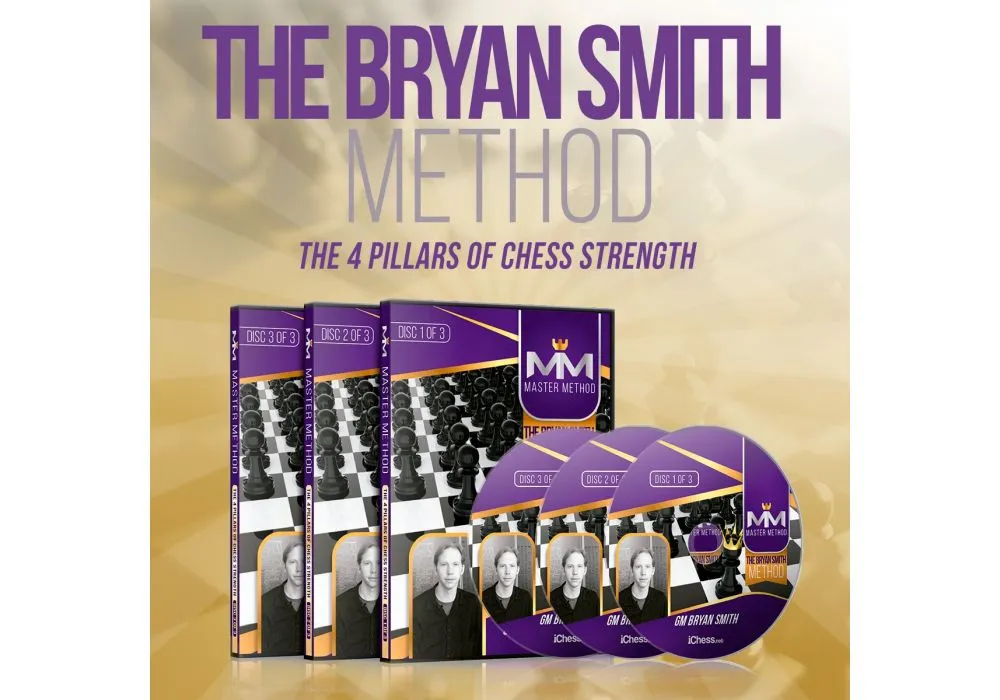Master Method Series #15

American GM Bryan Smith believes there are just a few factors that really make the difference in becoming a top player. He calls them “The 4 Pillars of Chess Strength”.
In this course, Bryan helps you climb each of these 4 pillars: calculation, intuitive understanding, concrete knowledge and psychological factors. Study hard and, by the end of the 14½ hours, you will be a razor-sharp, mentally tough competitor, ready to conquer any challenge.
Covering topics rarely found elsewhere such as the Kotov syndrome and how to sense a tactical weakness, The 4 Pillars of Chess Strength is essential material for any competitive player.
Summary
Intro: The Four Pillars of Chess Strength.
CalculationStraight Line Calculation- Advanced Calculation
- The Two Sides of Calculation
- The Kotov Syndrome
- Forgetting About the Opponent
- Assumptions
- Overlooked Candidate Moves
- Tunnel Vision
Intuitive UnderstandingProphylactic Thinking
- Physical Space
- The False Attack
- Time Advantage
- Open File
- Harmony
- A Positional Operation
- A More Effective Piece
- Two Bishops
- King Position in the Long-Term
- Chess Sins
- Positional Sacrifice
- Sensing a Tactical Weakness
Extra: Etudes and Entertainment
- Koskinen-Kasman
- Etude by Kubel
- Etude by Moravec
- Etude by Platov
- Another Etude by Kubbel
Concrete KnowledgeThe Spanish as White
- The King’s Indian as Black
- The Nature of Specific Endgame Knowledge
- Shouldering
- Pawn Endgames: Space Advantage
- Pawn Endgames: Triangulation
- Pawn Endgames: Breakthrough
- Pawn Endgames: Promotion Tactics
- Opposite Colored Bishops
- The Battle of Minor Pieces
- Activity in the Rook Endgame
Psychological Factors
- Critical Games
- Optimism and Pessimism




